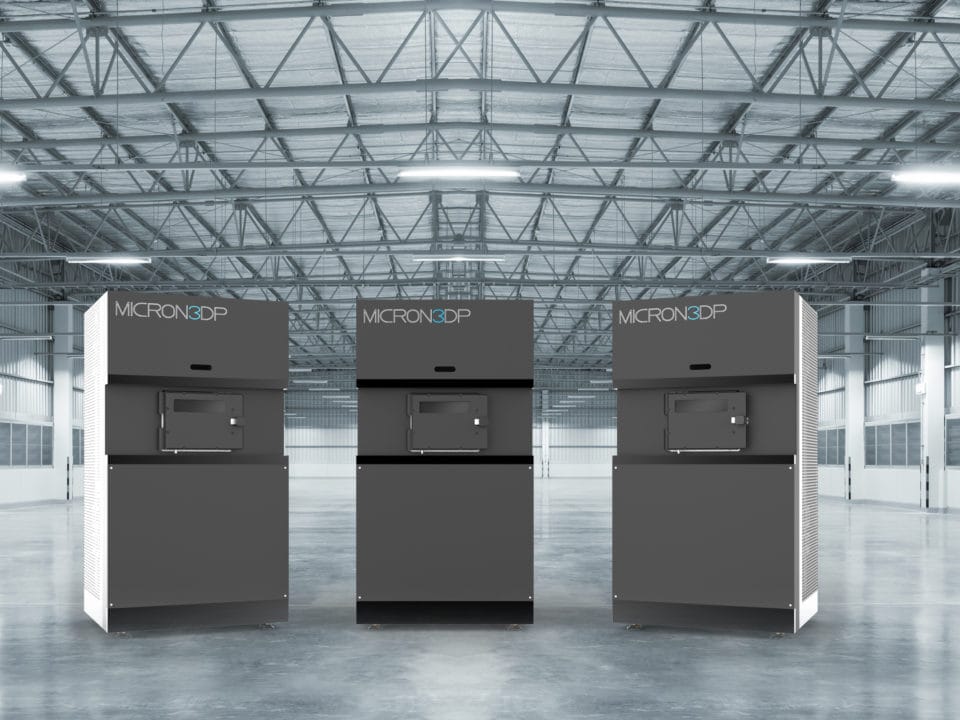
Secretive Israeli company MICRON3DP is working towards releasing the first 3D glass printer in a few short months.
The company has been working on this technology for some time and revealed last year some of their activities. But now it seems they are close to releasing a commercial machine that can 3D print in glass materials. Apparently they’ve installed “alpha test” units at unknown locations for evaluation.
The process for glass 3D printing is said to be “based on the FDM process”, suggesting they may use spools of glass fiber as input materials.
How does the process work? Well, I can’t really say because the secretive company has not really shown anyone very much of it. In fact, this still image from one of their videos shows perhaps a millimeter of their extruder at the top before it’s conveniently cut off. Aside from the image of the whole machine at top, I have no idea how this works. I suppose that’s their plan, though.

The big difference between MICRON3DP’s process and common plastic extrusion machines would be the temperature. To melt glass, they use “extremely high temperatures, over 1000 C⁰”. Two materials are currently used, soda lime glass and borosilicate glass.

The use of glass 3D printing could be very attractive for many industries, as glass is a peculiar material quite different from plastic and metals. It’s potentially transparent, suitable for food grade products, medically sterilizable and is chemically and thermally resistant far more than most materials.
I’m at a bit of a loss to suggest applications, as this is so new a material to 3D printing few have considered what might be possible. I suspect there could be some very interesting applications in the medical area, however, as like aerospace, that market already is large and has high prices for components. This financial expectation would be necessary to provide a way for the no-doubt expensive 3D printed glass parts to enter.
The company expects to punch out some beta testing units towards the end of this year, and I expect them to release the machine publicly in 2018, so there’s plenty of time to contemplate applications.
Via MICRON3DP

